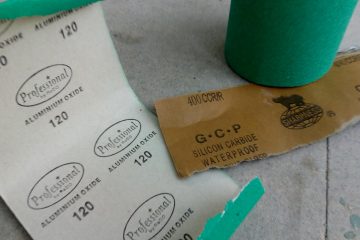What is Lino Printing?
Linocut is a printmaking technique, a variant of woodcut, in which a sheet of Lino is used for the relief surface. A design is cut into the Lino surface with a sharp knife, V-shaped chisel or gouge, with the raised (uncarved) areas representing a reversal (mirror image) of the parts to show printed.
The Lino sheet is inked with a roller, and then impressed onto paper or fabric. The actual printing can be done by hand or with a press.
As the material being carved has no particular direction to its grain and does not tend to split, it is easier to obtain certain artistic effects with Lino than with most woods, although the resultant prints can lack the often angular grainy character of woodcuts and engravings. Lino is much easier to cut than wood; especially when heated, but the pressure of the printing process degrades the plate faster and it is difficult to create larger works due to the material’s fragility.
How did linoleum printing come about?
Linoleum was created used in the late 1800s as a floor covering. Traditional wood and metal block were expensive and time consuming to create. Linoleum was cheaper to produce, and offered an easier surface to carve than wood and metal, especially when heated. It wasn’t as tough as metal, and didn’t have the surface grains and patterns that made wood trickier to carve. As linoleum was a softer material, it was much quicker to achieve results with the new linocut technique.
According to India Crafts, the word “linoleum” dates to 1863 when Frederick Walton of England combined the Latin word for flax, “linum”, with the Latin word for oil, “oleum”. But when artists such as Henri Matisse and Pablo Picasso started using linoleum in the early 1900s, its popularity grew.
Linocuts as fine art
In the late 1950s, Pablo Picasso advanced linocuts in fine art by developing the reductive printmaking technique. Picasso thought linocuts lent themselves to producing graphic posters and his first prints in the early 1950s were made up of bold and simple images. He liked the linocut technique as he thought it lent itself well to graphic posters, and he began experimenting with creating multiple colour prints using a single block.
His technique involved printing the lightest layer first, with each successive layer being carved away from the linoleum and printed over the last. This reductive technique meant it was impossible to reproduce the work afterwards so artists could create predetermined editions.
The linocut technique of printing has risen and fallen in popularity over the years. With artists like Picasso and Matisse popularising and demonstrating the potential of the technique, its acceptance as a fine art practice was solidified.
How do you get started in lino printing?
There is some special equipment needed, but you can find lino starter kits on the internet for about £18 (for example, this one from Handprinted).
Some of you will have attended one of our lino printing workshops so will have knowledge of how to make a print. Below is a list of some materials that you can use to make a monoprint:
- Lino
- Lino cutting tool
- Ink or paint
- A piece of Perspex or glass to roll your ink onto
- A pencil or something to draw with
- A sharpie or thin marker pen
- Paper for printing.
Here is a really good ‘how to’ video – a film of an artist explaining how to cut a lino print.


